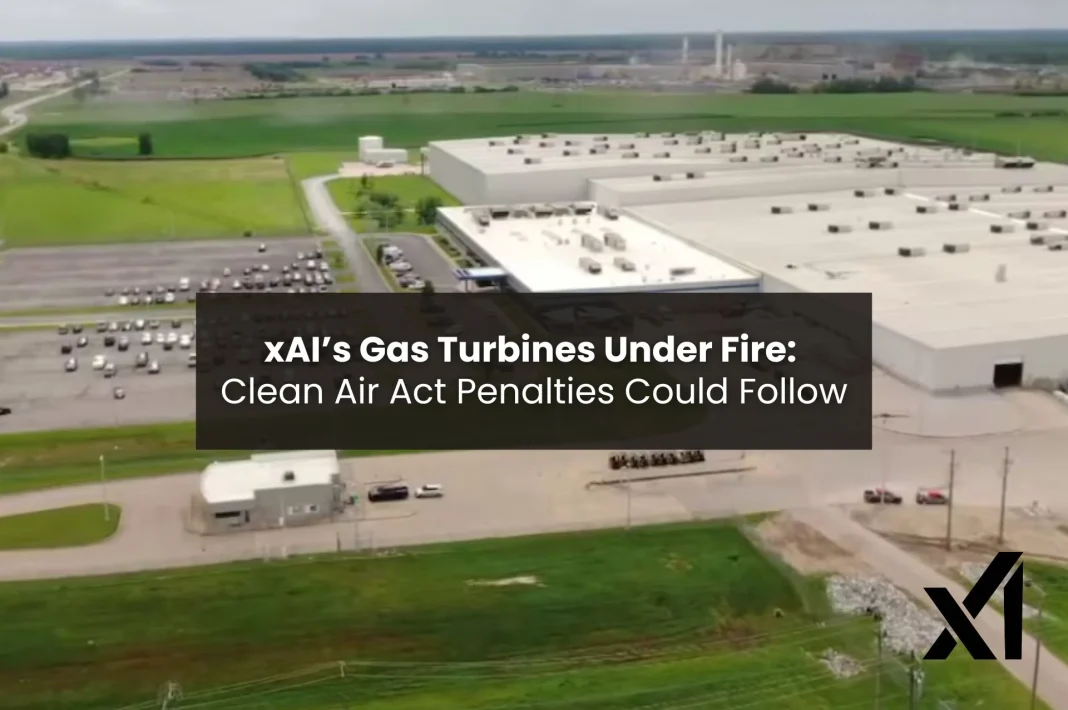It has been alleged that Elon Musk’s xAI company has been operating without dozens of natural gas turbines at its Colossus data center near Memphis. The issue is that it has been operating without the required air permits. For which the Southern Environmental Law Center (SELC) has issued a legal warning to xAI. The claim presented is that xAI has been violating the Clean Air Act, which protects the people and communities from unchecked industrial air pollution. If proven, these violations could subject xAI to Clean Air Act penalties. Which may include hefty fines and operational restrictions
So, What Exactly are the Allegations?
The SELC has sent xAI a formal notice, which states that has installed and ran at least 35 combustion turbines. Furthermore, there were even other sources of pollution from their end. All of this has been done without securing any preconstruction or operating air permits, which is legally required to be taken. So what does all of this mean legally? The clean air act mandates the organizations to file a notice of intent to sue within 60 days before initiating a lawsuit. And this letter does exactly that.
What’s exactly at stake? These turbines may emit over 2,000 tons of nitrogen oxides (NOx) per year, which is quite harmful and dangerous. Nitrogen oxide is a serious contributor to respiratory diseases as well as smog.
What does this mean for Memphis

Did you know that in 2024 Asthma and Allergy Foundation of America named Memphis as the asthma capital of the nation? Memphis actually suffers from some of the worst air quality in the Southeast. Furthermore, in the year 2024, the city saw high rates of emergency visits and asthma related deaths. Additionally, communities near the Colossus site have vulnerable populations and many of them have low income and are particularly underserved in respect to risk from further air pollution.
What’s Happening On the Ground?
As reported by TechCrunch, in March and April of 2025, SELC commissioned thermal and aerial photographs of the Colossus complex to fully comprehend the extent of the activity. The pictures verified that at least 33 of the 35 gas turbines that xAI had placed around the perimeter of the site were in use.
A June 15 airborne scan revealed that 26 units remained, including three additional ones built since April. Despite local reports indicating that xAI had started dismantling the turbines. At 407 megawatts, the aggregate output of the turbines was almost equal to the original installation’s maximum capacity.
Even before connecting to the local electrical grid. This electricity enabled high-performance AI workloads by supporting xAI’s Phase I GPU clusters.
Permits in Question, Responsibility in Doubt
The confusion actually arises from what Shelby County Health Department (SCHD) initially told the reporters. At first it was said that xAI’s turbines were exempt from standard air permitting rules. But agency had never publicly disclosed what xAI exactly was operating on the site. Neither did they justify the legal basis for its exemption. As a matter of fact, Tennessee law doesn’t provide exemptions. Particularly that fits this case. Moreover, all new sources of criteria air pollutants must apply for both construction and operating permits. Another accusation that SELC has put forth is that xAI has not taken adequate measures in installing air pollution controls.
If you want to understand just how much power AI models consume, take a look at this breakdown on AI’s energy use. It explains and shows us why we need to hold tech companies accountable for what fuels their innovation.
